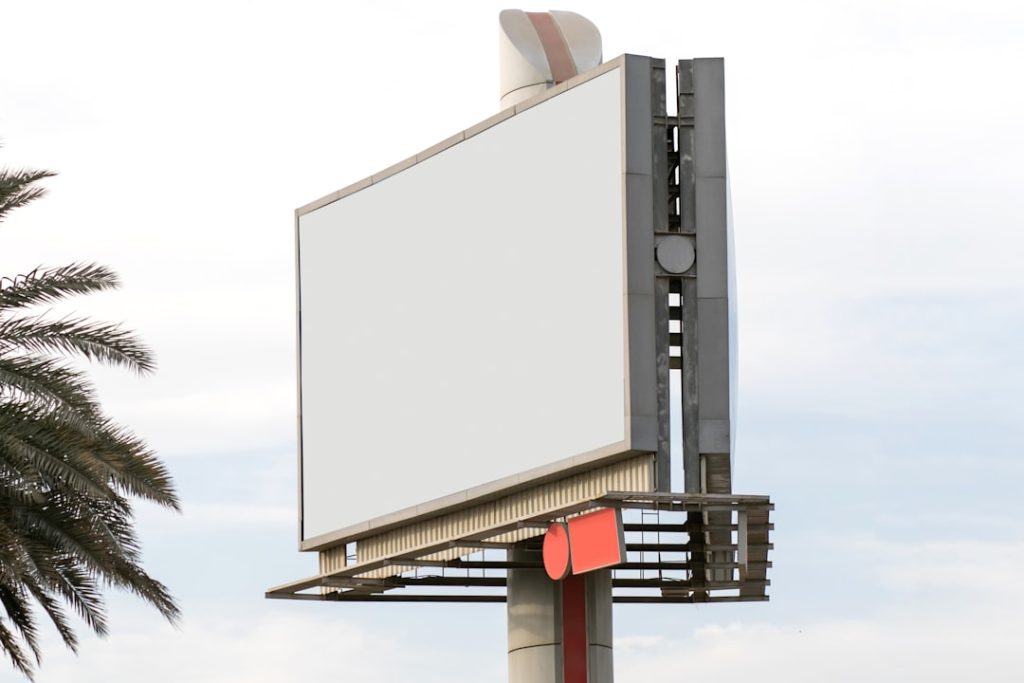Boat advertising has emerged as a dynamic and innovative marketing strategy that harnesses the unique visibility and mobility of watercraft to reach diverse audiences. Unlike traditional advertising mediums, boat advertising offers a captivating visual experience that can engage potential customers in a way that static billboards or print ads cannot. The sheer presence of a well-branded boat on the water can create a sense of intrigue and curiosity, drawing attention from both land and sea.
This form of advertising is particularly effective in coastal areas, lakes, and rivers where large gatherings of people congregate, such as during festivals, regattas, or summer vacations. Moreover, the power of boat advertising lies in its ability to create memorable impressions. When a boat adorned with eye-catching graphics glides through the water, it not only captures the attention of onlookers but also leaves a lasting impression.
This is especially true in environments where people are relaxed and in a recreational mindset, making them more receptive to brand messaging. The combination of movement, scenic backdrops, and the novelty of seeing advertisements on watercraft can enhance brand recall and foster positive associations with the advertised products or services.
Key Takeaways
- Boat advertising offers a unique and eye-catching way to promote brands on water.
- Selecting the appropriate boat type is crucial for matching advertising goals and target audiences.
- Effective design should be clear, bold, and easily visible from a distance to capture attention.
- Identifying and targeting specific markets enhances the impact and relevance of boat ads.
- Measuring results and leveraging brand awareness through boat ads can drive significant business growth.
Choosing the Right Boat for Advertising
Selecting the appropriate type of boat for advertising is crucial to the success of any campaign. The choice largely depends on the target audience, the nature of the product or service being promoted, and the specific environment in which the advertisement will be displayed. For instance, a sleek yacht may be ideal for luxury brands aiming to attract affluent consumers, while a vibrant party boat could be more suitable for promoting lifestyle products aimed at younger demographics.
Each type of vessel carries its own connotations and can evoke different emotional responses from viewers. Additionally, considerations such as size, visibility, and maneuverability play significant roles in the decision-making process. A larger boat may offer more surface area for branding but could be less agile in crowded waters.
Conversely, smaller boats can navigate tighter spaces and reach more intimate gatherings but may have limited advertising space. It is essential to evaluate the specific goals of the advertising campaign and align them with the characteristics of the chosen vessel to maximize impact.
Designing an Effective Boat Advertisement

The design of a boat advertisement must be both visually striking and strategically crafted to convey the intended message effectively. Bold colors, high-contrast graphics, and clear typography are essential elements that can enhance visibility from a distance. The design should also reflect the brand’s identity and resonate with the target audience.
For example, a company promoting eco-friendly products might opt for earthy tones and natural imagery to align with its sustainability message. In addition to aesthetics, the placement of branding elements is critical. Logos should be positioned prominently to ensure they are easily recognizable, while any accompanying text should be concise and impactful.
Given that viewers may only have a few seconds to absorb the advertisement as the boat passes by, clarity is paramount. Incorporating a call-to-action can also drive engagement; phrases like “Visit our website” or “Call now for exclusive offers” can prompt immediate responses from intrigued onlookers.
Identifying Target Markets for Boat Advertising
| Metric | Description | Example Value | Relevance to Boat Advertising |
|---|---|---|---|
| Demographic Age Range | Age group most likely to engage with boat-related ads | 30-55 years | Targets adults with disposable income for boating products |
| Income Level | Average household income of target market | 75,000 – 150,000 | Identifies consumers who can afford boating and related services |
| Geographic Location | Regions with high boating activity or water access | Coastal states, Great Lakes region | Focuses advertising where boating is popular and accessible |
| Boating Interest Level | Percentage of population interested in boating | 15% | Measures potential audience size for boat advertising |
| Seasonal Engagement | Months with highest boating activity | May – September | Optimizes timing of advertising campaigns |
| Preferred Advertising Channels | Most effective media for reaching target market | Social media, boating magazines, marinas | Ensures ads are placed where target audience is most active |
| Boat Ownership Rate | Percentage of households owning boats | 8% | Indicates market penetration and potential for upselling |
Understanding the target market is fundamental to crafting an effective boat advertising strategy. Different demographics respond to various marketing approaches, and identifying these groups can help tailor messages that resonate with their interests and lifestyles. For instance, if a brand aims to reach outdoor enthusiasts, advertising on boats at lakes or rivers during peak recreational seasons would be advantageous.
Conversely, targeting affluent consumers might involve showcasing luxury products at yacht shows or upscale coastal events. Market research plays a vital role in this process. Analyzing consumer behavior, preferences, and spending habits can provide insights into which segments are most likely to engage with the brand.
Additionally, geographic considerations are important; certain regions may have higher concentrations of specific demographics, such as families in suburban areas or young professionals in urban centers. By aligning advertising efforts with these insights, brands can optimize their outreach and increase the likelihood of conversion.
Maximizing Reach with Boat Advertising
To maximize reach with boat advertising, it is essential to consider strategic placement and timing. Positioning boats in high-traffic areas where large crowds gather can significantly enhance visibility. Events such as music festivals, sporting events, or local fairs present prime opportunities for showcasing branded vessels.
Furthermore, timing is crucial; summer months often see increased foot traffic near water bodies as people flock to enjoy leisure activities. Collaboration with local businesses or event organizers can also amplify reach. Partnering with popular restaurants or entertainment venues along waterfronts can create synergistic marketing opportunities where both parties benefit from increased exposure.
Additionally, leveraging social media platforms to promote boat appearances can extend reach beyond physical locations. Sharing images or videos of the branded boat in action can generate buzz and encourage followers to engage with the brand online.
Measuring the Effectiveness of Boat Advertising

Measuring the effectiveness of boat advertising requires a multifaceted approach that combines quantitative and qualitative metrics. One common method is tracking engagement through direct responses generated by the advertisement. This could include monitoring website traffic spikes following a boat appearance or analyzing social media interactions related to posts featuring the boat.
Utilizing unique URLs or QR codes on the advertisement can also facilitate tracking how many people engage with the brand after seeing the boat. Surveys and feedback forms can provide valuable qualitative insights into how audiences perceive the advertisement. Gathering opinions from viewers about their impressions of the brand and whether they recall seeing the advertisement can help gauge effectiveness.
Additionally, sales data before and after a campaign can reveal whether there was an uptick in purchases linked to boat advertising efforts. By combining these various metrics, brands can gain a comprehensive understanding of their campaign’s impact.
Building Brand Awareness through Boat Advertising
Boat advertising serves as an effective tool for building brand awareness due to its unique ability to reach diverse audiences in engaging environments. The visual appeal of a well-branded boat can create curiosity among onlookers who may not have been previously aware of the brand. This exposure is particularly valuable in crowded markets where standing out is essential for capturing consumer attention.
Moreover, consistent branding across multiple appearances can reinforce recognition over time. When consumers repeatedly encounter a brand’s advertisement on different boats or at various events, it solidifies their familiarity with the brand’s identity. This repeated exposure fosters trust and credibility, making consumers more likely to consider the brand when making purchasing decisions.
As such, boat advertising not only raises awareness but also contributes to long-term brand loyalty.
Leveraging Boat Advertising for Business Growth
For businesses looking to expand their market presence, leveraging boat advertising can be a game-changer. The unique nature of this advertising medium allows brands to differentiate themselves from competitors who rely solely on traditional marketing channels. By incorporating boat advertising into their overall marketing strategy, businesses can tap into new customer segments and create memorable experiences that resonate with audiences.
Furthermore, as consumers increasingly seek authentic connections with brands, experiential marketing through boat advertising offers an opportunity to engage customers in meaningful ways. Hosting events on branded boats or offering exclusive experiences tied to the advertisement can foster deeper relationships with consumers. This approach not only drives immediate sales but also cultivates brand advocates who are likely to share their positive experiences with others, further amplifying business growth through word-of-mouth marketing.
In conclusion, boat advertising presents a unique opportunity for brands to connect with audiences in innovative ways that traditional media cannot replicate. By carefully selecting vessels, designing impactful advertisements, identifying target markets, maximizing reach, measuring effectiveness, building brand awareness, and leveraging these strategies for growth, businesses can harness the full potential of this captivating marketing medium.


